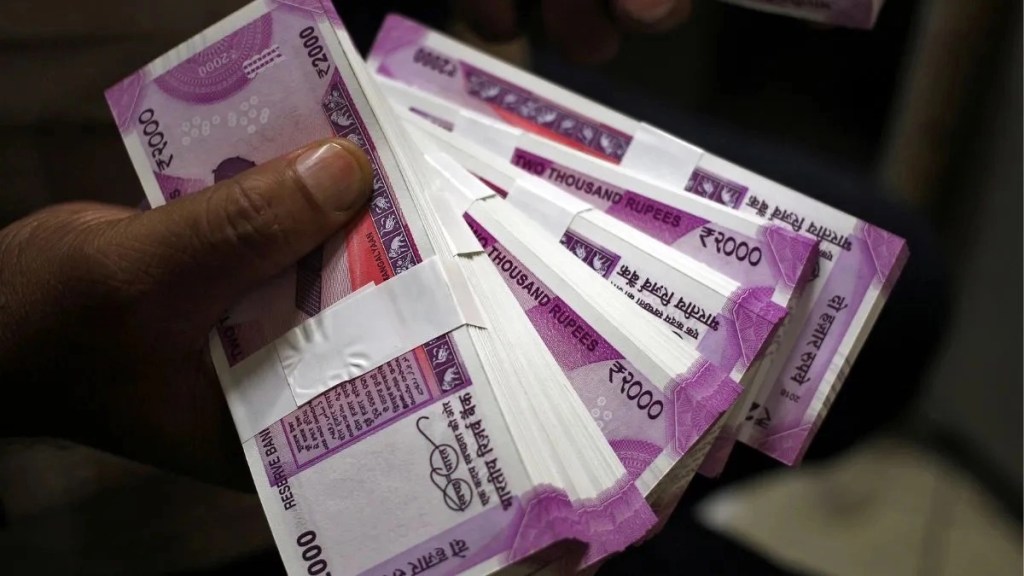– By Rumki Majumdar
The fourth quarter GDP data of growth of 6.1 per cent was pleasantly surprising but not entirely unexpected. Sector-wise growth was broad-based, which points to a sustained recovery across all sectors despite global headwinds. But when looked at from the expenditure side, private consumption growth, which is the biggest growth driver, has barely budged over the past four quarters and its share in GDP fell to the lowest in the past seven quarters.
A closer examination indicates that there is a growing demand among individuals with higher incomes, while financial concerns exist in other income groups. Sales of high-end cars versus entry-level cars or the numbers of passengers taking flights versus trains point to skewed demand growth in the higher-income segment. However, we believe that efforts are being made to address the growing concerns regarding the widening income gap, and recent data suggests sustainable growth in the future.
Strong growth in manufacturing and construction is the cherry on the cake since the modest recovery till Q3 in the sector concerned policymakers. These sectors are the biggest job creators, especially for low-skilled workers. High-frequency data on credit disbursement to industry and light diesel oil consumption suggests manufacturing activity might be gaining sustainable traction. With industry capacity utilisation rates and the government’s capex spending reaching high levels, we believe private investments will crowd in sooner than expected as private consumption buckles up. The highest ever Rs 29.9 trillion of new investment projects announced in FY2022-23 asserts our postulation.
Growth in the agriculture sector was significantly higher than average historical levels. This sector has done exceptionally well over the past three years and growth this quarter came in stronger despite unseasonal rains in March. This bodes well for rural income and food inflation. Nevertheless, growth in the coming quarters remains uncertain depending on the monsoon rainfall. Despite risks in food inflation, we expect CPI to remain stable (albeit at RBI’s upper range of the inflation target). The moderation of the global economy and stability in crude oil and industrial raw material prices will ease price pressure.
The other good news was the robust net exports growth, despite global headwinds. Imports grew the slowest since December 2020 because of stable crude oil prices bringing down India’s import bill. Concerns are, will that be sustainable amid a slowing global demand? We believe in the rising contribution of services to exports. Not only IT and IT-es exports have remained robust, but the share of professional and management consulting services has also been rising quickly throughout 2022. We believe this trend will continue as India has a comparative advantage. Recessionary pressures in the West will compel MNCs to consider destinations where they get the bang for their buck. As India’s global in-house centres (GICs) selling proposition is not just about ‘a safe harbour of cost savings’, but also ‘competence and value creation’, India becomes an attractive destination. With GICs offering global clients a myriad of high-end and critical solutions across specialisations such as IT, accounting, and legal, India is ready to meet the rising demand for services in high-value-added tasks of management consulting, data analytics, conceptualisation, and design. This will ensure increased contribution of services to exports, and GDP.
The latest fiscal deficit numbers suggest the government is keeping “Arjuna’s eyes” on its fiscal deficit target. The capex spending remained robust, while revenue expenses are contained asserting its focus on infrastructure spending. Buoyant tax collections have also helped. The government’s prudence in spending instills confidence among domestic and foreign investors (as is evident from the falling sovereign yields). The government aims to bring down the fiscal deficit to 5.9 per cent of GDP in FY 2023-24 and further to 4.5 per cent in FY 2024-25. The government’s adherence to fiscal discipline will play an important role in crowding in private investment and containing inflation.
We are optimistic and expect growth in FY 2023-24 to be between 6.0 per cent and 6.5 per cent. GDP growth will be driven by a likely pick-up in private investments kickstarting the virtuous circle of job creation, income, and productivity. Of course, global risks will continue to weigh on the outlook. But, India has learnt to remain resilient, and the latest data confirms that.
(Rumki Majumdar is an Economist at Deloitte India.)
Disclaimer: Views expressed are personal and do not reflect the official position or policy of Financial Express Online. Reproducing this content without permission is prohibited.

